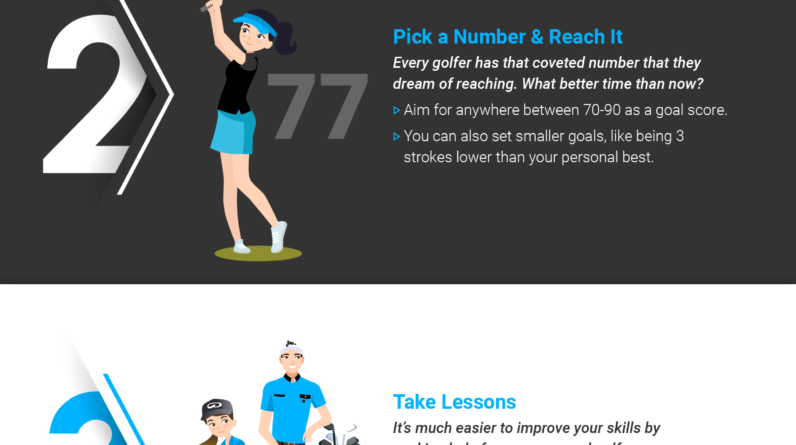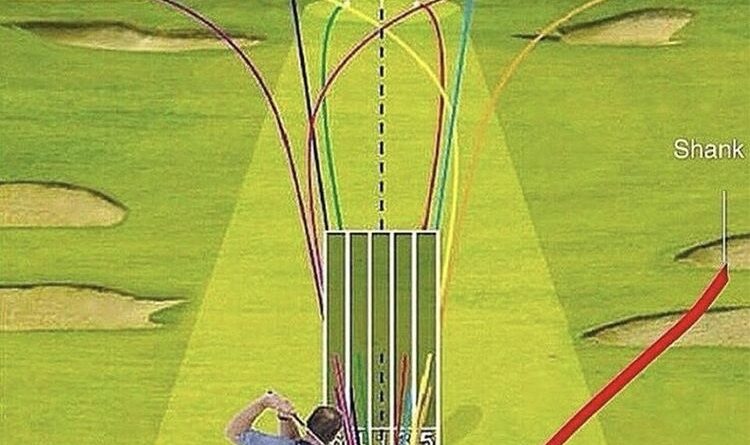Are you one of those golfers who feels their heart pounding and their hands trembling every time they step onto the first tee? If so, you’re not alone. First-tee jitters are a common struggle for many golfers, both amateur and professional. Conquering these nerves and finding a way to start your round with confidence is the key to unlocking your true potential on the course. In this article, we will explore some tried and tested strategies to help you overcome those first-tee jitters and start every round on a positive note. So, take a deep breath, relax, and let’s discover how you can conquer those fears and play your best golf from the very first shot.

Understanding First-Tee Jitters
Definition of First-Tee Jitters
First-tee jitters, often referred to as first-tee nerves, are feelings of anxiety or nervousness that occur when preparing to hit the first shot of a golf round. It is a common phenomenon experienced by many golfers, from beginners to professionals. These jitters can manifest physically, mentally, and emotionally, affecting the golfer’s overall performance on the course.
Common Symptoms
First-tee jitters can manifest in various ways, and the symptoms may differ from person to person. Some common symptoms include increased heart rate, sweating, shaky hands, butterflies in the stomach, difficulty concentrating, negative thoughts or self-doubt, and muscle tension. These symptoms can be overwhelming and may significantly impact a golfer’s ability to perform at their best.
Causes of First-Tee Jitters
Several factors can contribute to the development of first-tee jitters. One primary factor is the pressure to perform well, especially when playing in front of others or in competitive settings. Fear of failure and embarrassment can make a golfer feel anxious and nervous. Lack of experience or uncertainty about the golf course, unfamiliarity with the equipment, and high expectations can also contribute to first-tee jitters. Understanding the underlying causes can help golfers address and overcome these challenges.
Preparing Physically
Warm-up Exercises
Before stepping onto the first tee, it is essential to warm up your body to prepare for the physical demands of the game. Engaging in a dynamic warm-up routine that includes stretching, light cardio exercises, and mobility exercises can help increase blood flow, improve flexibility, and reduce muscle tension. This physical preparation can alleviate some of the physical symptoms associated with first-tee jitters and enhance your performance on the course.
Familiarizing with Your Equipment
Another crucial aspect of physical preparation is familiarizing yourself with your golf equipment. Spend time at the practice range getting comfortable with your clubs, understanding their characteristics, and developing a consistent swing. Knowing your equipment well builds confidence and reduces potential anxiety related to unfamiliarity during your first shot.
Practice Swings
Performing practice swings before your first tee shot can help alleviate some of the tension and anxiety associated with first-tee jitters. Take a few swings to get a feel for the motion and rhythm, focusing on smooth and controlled motions. This simple practice routine can help you drift into a calm mental state and build confidence in your swing.
Mental Preparation Techniques
Positive Visualization
Visualization is a powerful mental technique that can help alleviate first-tee jitters. Take a few moments before your round to close your eyes and imagine yourself successfully hitting the first shot, visualizing the trajectory, the sound of the crisp impact, and the ball landing exactly where you want it to go. By engaging your senses and imagining positive outcomes, you can program your mind for success and boost your confidence.
Deep Breathing Exercises
Deep breathing exercises are effective tools for calming the mind and reducing anxiety. Before stepping onto the first tee, take a few moments to focus on your breathing. Inhale deeply through your nose, feeling your lungs fill with air, and exhale slowly through your mouth, releasing any tension or stress. This intentional breathing technique helps slow down your heart rate, relax your muscles, and bring a sense of calmness to your body and mind.
Confidence Boosters
Boosting your confidence is crucial in overcoming first-tee jitters. Remind yourself of your past successes and positive experiences on the golf course. Reflect on your skills and the progress you have made in your game. Visualize yourself achieving your desired outcomes and affirm your abilities. Surround yourself with encouraging and supportive people who believe in you and your abilities. Building your confidence arsenal will help you face the first tee with a positive mindset and reduce anxiety.
Developing a Pre-Shot Routine
Importance of a Pre-Shot Routine
Having a consistent pre-shot routine can be a game-changer when dealing with first-tee jitters. A pre-shot routine serves as a mental and physical anchor, providing a sense of familiarity and structure before each shot. It helps focus your mind, maintain a calm state, and ensure you are fully prepared before swinging the club. A well-practiced pre-shot routine can instill confidence and help reduce anxiety on the first tee and throughout the round.
Creating Your Personal Routine
Developing your pre-shot routine requires experimentation and finding a sequence of actions that works best for you. Start by identifying the key components of your routine, such as visualizing the shot, taking a practice swing, aligning your body, or checking your grip. Experiment with different timings and find a rhythm that feels comfortable and natural. Once you have established your routine, practice it consistently during your training sessions to reinforce muscle memory and familiarity.
Practicing Your Routine
Practicing your pre-shot routine is just as important as practicing your swing. Incorporate your routine into your practice sessions, both at the range and on the course. Visualize the shot, execute your routine, and make it a part of your muscle memory. By consistently practicing your routine, you create a sense of comfort and familiarity, reducing the anxiety associated with the first tee and increasing your overall confidence and focus.

Reducing Pressure and Expectations
Setting Realistic Goals
Setting realistic goals can help alleviate the pressure and expectations associated with the first tee. Instead of fixating on the outcome or trying to impress others, focus on setting process-oriented goals. For example, aiming to maintain good posture throughout the swing, maintaining consistent tempo, or focusing on the target rather than the final score. By shifting your focus to the process, you allow yourself to enjoy the game and perform to the best of your abilities without unnecessary pressure.
Focusing on Process, Not Outcome
Similar to setting process-oriented goals, focusing on the process rather than the outcome can help reduce anxiety and manage first-tee jitters effectively. Trust in your training, technique, and the preparation you have put in. Instead of worrying about the final result or how your score compares to others, concentrate on executing each shot to the best of your ability. By staying in the present moment and focusing on the process, you release unnecessary tension and allow your natural abilities to shine through.
Managing Performance Anxiety
Performance anxiety is a common challenge faced by golfers dealing with first-tee jitters. To effectively manage anxiety, it is essential to develop coping mechanisms and techniques. One approach is to embrace the nerves as an energizing force rather than viewing them as a hindrance. Embrace the excitement and convert it into positive energy to fuel your performance. Redirect your thoughts to positive self-talk, affirmations, or engaging with your playing partners. By acknowledging and accepting the nerves, you can reframe anxious thoughts and perform at your best.
Handling Nerves on the Tee
Relaxation Techniques
Incorporating relaxation techniques into your routine can help manage nerves and first-tee jitters effectively. Deep breathing exercises, as mentioned earlier, are an excellent technique to induce a state of calmness. Additionally, progressive muscle relaxation, where you consciously tense and relax different muscle groups, can release tension from your body. Another effective technique is to engage in mindfulness or meditation before teeing off, helping to quiet the mind and promote relaxation.
Distraction Strategies
When faced with nerves on the tee, employing distraction strategies can redirect your focus away from anxiety-inducing thoughts. Engage in light conversation with your playing partners, focus on the surroundings, or listen to calming music during your warm-up. These distractions help shift your attention away from the pressure and create a more relaxed mental state.
Self-Talk
Positive self-talk is a powerful tool for managing nerves on the tee. Instead of focusing on negative thoughts or self-doubt, consciously choose positive and constructive words to reinforce your confidence and abilities. Encourage yourself with phrases like “You’ve got this,” “Trust your swing,” or “Stay relaxed and confident.” By replacing negative self-talk with positive affirmations, you empower yourself and create a supportive inner dialogue that boosts your overall performance.

Gaining Experience and Exposure
Playing More Rounds
Experience is a key factor in overcoming first-tee jitters. The more rounds of golf you play, the more comfortable you become with the environment and the entire process. Embrace opportunities to play more rounds, whether in casual settings or in competitive situations. Each round played presents an opportunity to face your fears, learn from your experiences, and build the mental resilience required to handle first-tee jitters with ease.
Participating in Practice Sessions
Participating in practice sessions and drills specifically designed to simulate first-tee scenarios can help desensitize yourself to the pressure and anxiety. Practice hitting tee shots in a controlled environment, such as a driving range or practice facility, and gradually expose yourself to increasing levels of performance pressure. By repeatedly practicing under similar conditions, you build familiarity, confidence, and mental strength to overcome first-tee jitters.
Joining Golf Communities
Joining golf communities, such as local clubs or leagues, offers opportunities for exposure to different playing situations, diverse skill levels, and friendly competition. Interacting with fellow golfers who have also dealt with first-tee jitters can provide a supportive environment where you can share experiences, exchange coping strategies, and draw inspiration from others. By immersing yourself in a golf community, you benefit from collective knowledge and encouragement, which can contribute to overcoming first-tee jitters.
Seeking Professional Guidance
Working with a Golf Coach
Engaging the services of a golf coach can provide valuable guidance in overcoming first-tee jitters. A coach can assess your swing, technique, and overall game, identifying areas of improvement and implementing strategies to build confidence and mental toughness. They can also customize practice drills and provide feedback tailored to your needs. With the help of a coach, you can gain insights, professional guidance, and the necessary tools to overcome first-tee jitters effectively.
Sports Psychology Consultations
Seeking sports psychology consultations can be beneficial in developing effective mental strategies to combat first-tee jitters. Sports psychologists specialize in addressing the psychological aspects of performance, helping athletes understand and overcome mental barriers. They offer techniques, such as visualization, self-talk, and relaxation exercises, as well as personal support and guidance throughout the process. By working with a sports psychologist, you can tap into their expertise and gain the necessary skills to manage anxiety and perform at your best.
Joining Support Groups
Joining support groups or seeking out like-minded individuals who share similar experiences can provide a valuable support system. Support groups offer a platform to discuss challenges, share coping mechanisms, and receive encouragement from individuals who understand the struggles associated with first-tee jitters. By connecting with others facing similar situations, you can gain advice, empathy, and encouragement, ultimately building your resilience and confidence.

Embracing Mistakes and Learning
Understanding the Learning Process
In golf, mistakes are an integral part of the learning process. Instead of fearing failure, reframe your mindset to embrace mistakes as opportunities for growth. Accept that you will encounter ups and downs on your golf journey and view each shot as a learning experience. By adopting a growth mindset and focusing on continuous improvement, you shift your perspective from fear of failure to excitement for growth, easing the pressure and anxiety associated with first-tee jitters.
Emphasizing Growth Mindset
Building on the notion of a growth mindset, it is essential to emphasize the belief that skills and abilities can be developed through dedication and effort. Instead of attributing success or failure solely to innate talent, focus on the factors within your control, such as practice, preparation, and mindset. Emphasize the process of improvement rather than comparing yourself to others. By cultivating a growth mindset, you build resilience, enhance your problem-solving skills, and effectively navigate through first-tee jitters.
Analyzing and Adjusting Strategies
Analyzing and adjusting your strategies in response to first-tee jitters is a crucial step in overcoming them. Reflect on your experiences, identifying patterns or triggers that exacerbate nervousness. Evaluate the effectiveness of different coping mechanisms and adjust as needed. Experiment with various mental and physical strategies, seeking what works best for you as an individual. By continuously adapting and refining your strategies, you can find effective solutions to calm your nerves and enhance your overall performance.
Building Mental Resilience
Developing Mental Toughness
Building mental toughness is a vital component in overcoming first-tee jitters. Mental toughness involves developing the ability to stay focused, maintain composure, and bounce back from setbacks. Engage in mental strength training exercises, such as visualization, mindfulness, and self-reflection, to cultivate resilience in the face of challenges. Accept that adversity is a part of the game and develop the mental resilience to rise above it, ultimately overcoming first-tee jitters.
Building Confidence
Confidence is a key factor in overcoming first-tee jitters. Build your confidence by focusing on your strengths and past successes. Remind yourself of your abilities and the progress you have made in your game. Encourage positive self-talk and avoid comparing yourself to others. Set achievable goals and acknowledge your achievements along the way. By intentionally building your confidence, you create a solid foundation to face the first tee with self-assurance and reduce anxiety.
Maintaining a Positive Attitude
Maintaining a positive attitude is essential throughout the process of overcoming first-tee jitters. Adopt a mindset that embraces challenges as opportunities and focuses on the positive aspects of your game. Celebrate small victories, learn from mistakes, and avoid dwelling on negativity. Surround yourself with positive influences and supportive individuals who uplift and encourage you. By cultivating a positive attitude, you can approach each round with optimism, resilience, and a greater ability to manage first-tee jitters effectively.
In conclusion, first-tee jitters are a common experience among golfers, but they can be managed and overcome with a combination of physical and mental preparations. By understanding the causes and symptoms of first-tee jitters, utilizing techniques such as visualization and deep breathing, developing a consistent pre-shot routine, setting realistic goals, and seeking professional guidance when necessary, you can build the mental resilience needed to overcome first-tee jitters and perform your best on the golf course. Embrace the learning process, maintain a growth mindset, and put in the effort to build confidence and mental toughness. With practice and perseverance, you can transform first-tee jitters into opportunities for growth, enjoyment, and success in your golf game.







